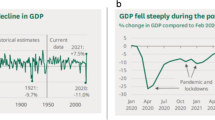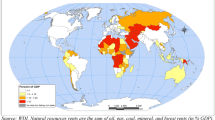Abstract
Developing countries (DCs) and developed countries have geographic, economic, and social differences. The prevalence and incidence of epilepsy are higher in DCs than in developed countries. However, within DCs, given the high incidence of epilepsy, the prevalence is relatively low, which may be due to high mortality for people with epilepsy (PWE). Neurocysticercosis is one of the main causes of symptomatic epilepsy in many DCs. Prognosis in DCs seems similar to that in developed countries. Because phenobarbital and phenytoin are available and inexpensive, they are the drugs most often used in DCs. The cost of newer antiepileptic drugs and the limited availability of resources for epilepsy care in DCs mean that care for PWE in DCs is marginalized and that many people receive no pharmacologic treatment. The most cost-effective way to decrease the treatment gap in DCs would be to deliver the epilepsy services through primary health care.
Similar content being viewed by others
References and Recommended Reading
The World Bank: Global Economic Prospects 2004: Realizing the Development Promise of the Doha Agenda. Available at http://siteresources.worldbank.org/INTRGEP2004/Resources/gep2004fulltext.pdf. Accessed May 21, 2009.
Bharucha NE, Carpio A, Gallo Diop A: Epidemiology of epilepsy in developing countries. In Epilepsy: A Comprehensive Textbook, edn 2. Edited by Engel P, Pedley T. Philadelphia: Lippincott Williams & Wilkins; 2008:89–101.
World Health Organization: Atlas: Epilepsy Care in the World. Geneva: World Health Organization; 2005.
Wang WZ, Wu JZ, Wang DS, et al.: The prevalence and treatment gap in epilepsy in China: an ILAE/IBE/WHO study. Neurology 2003, 60:1544–1545.
Birbeck GL, Kalichi EM: Epilepsy prevalence in rural Zambia: a door-to-door survey. Trop Med Int Health 2004, 9:92–95.
Ndoye NF, Sow AD, Diop AG, et al.: Prevalence of epilepsy its treatment gap and knowledge, attitude and practice of its population in sub-urban Senegal an ILAE/IBE/WHO study. Seizure 2005, 14:106–111.
Mungala-Odera V, White S, Meehan R, et al.: Prevalence, incidence and risk factors of epilepsy in older children in rural Kenya. Seizure 2008, 17:396–404.
Edwards T, Scott AG, Munyoki G, et al.: Active convulsive epilepsy in a rural district of Kenya: a study of prevalence and possible risk factors. Lancet Neurol 2008, 7:50–56.
Noronha AL, Borges MA, Marques LH, et al.: Prevalence and pattern of epilepsy treatment in different socioeconomic classes in Brazil. Epilepsia 2007, 48:880–885.
Melcon MO, Kochen S, Vergara RH: Prevalence and clinical features of epilepsy in Argentina. A community-based study. Neuroepidemiology 2007, 28:8–15.
Del Brutto OH, Santibanez R, Idrovo L, et al.: Epilepsy and neurocysticercosis in Atahualpa: a door-to-door survey in rural coastal Ecuador. Epilepsia 2005, 46:583–587.
Dent W, Helbok R, Matuja WB, et al.: Prevalence of active epilepsy in a rural area in South Tanzania: a door-to-door survey. Epilepsia 2005, 46:1963–1969.
Medina MT, Duron RM, Martinez L, et al.: Prevalence, incidence, and etiology of epilepsies in rural Honduras: the Salama study. Epilepsia 2005, 46:124–131.
Calisir N, Bora I, Irgil E, Boz M: Prevalence of epilepsy in Bursa city center, an urban area of Turkey. Epilepsia 2006, 47:1691–1699.
Tran DS, Odermatt P, Le TO, et al.: Prevalence of epilepsy in a rural district of central of Lao PDR. Neuroepidemiology 2006, 26:199–206.
Tuan NA, Cuong le Q, Allebeck P, et al.: The prevalence of epilepsy in a rural district of Vietnam: a population-based study from the EPIBAVI project. Epilepsia 2008, 49:1634–1637.
Bielen I, Cvitanovic-Sojat L, Bergman-Markovic B, et al.: Prevalence of epilepsy in Croatia: a population-based survey. Acta Neurol Scand 2007, 116:361–367.
Banerjee PN, Hauser WA: Incidence and prevalence. In Epilepsy: A Comprehensive Textbook, edn 2. Edited by Engel P, Pedley T. Philadelphia: Lippincott Williams & Wilkins; 2008:45–56.
Dogui M, Jallon P, Tamallah JB, et al.: Episousse: incidence of newly presenting seizures in children in the Region of Sousse, Tunisia. Epilepsia 2003, 44:1441–1444.
Benn EK, Hauser WA, Shih T, et al.: Estimating the incidence of first unprovoked seizure and newly diagnosed epilepsy in the low-income urban community of Northern Manhattan, New York City. Epilepsia 2008, 49:1431–1439.
Beghi E, Sander JW: The natural history and prognosis of epilepsy. In Epilepsy: A Comprehensive Textbook, edn 2. Edited by Engel P, Pedley T. Philadelphia: Lippincott Williams & Wilkins; 2008:65–70.
Carpio A, Bharucha NE, Jallon P, et al.: Mortality of epilepsy in developing countries. Epilepsia 2005, 46(Suppl 11):28–32.
Ding D, Wang W, Wu J, et al.: Premature mortality in people with epilepsy in rural China: a prospective study. Lancet Neurol 2006, 5:823–827.
Kaiser C, Asaba G, Kasoro S, et al.: Mortality from epilepsy in an onchocerciasis-endemic area in West Uganda. Trans R Soc Trop Med Hyg 2007, 101:48–55.
Daoud AS, Ajloni S, El-Salem K, et al.: Risk of seizure recurrence after a first unprovoked seizure: a prospective study among Jordanian children. Seizure 2004, 13:99–103.
Kochen S, Melcon MO: Prognosis of epilepsy in a community-based study: 8 years of follow-up in an Argentine community. Acta Neurol Scand 2005, 112:370–374.
Scotoni AE, Manreza ML, Guerreiro MM: Recurrence after a first unprovoked cryptogenic/idiopathic seizure in children: a prospective study from Sao Paulo, Brazil. Epilepsia 2004, 45:166–170.
Carpio A, Hauser W: Prognosis for seizure recurrence in patients with newly diagnosed neurocysticercosis. Neurology 2002, 59:1730–1734.
Terra-Bustamante VC, Coimbra ER, Rezek KO, et al.: Cognitive performance of patients with mesial temporal lobe epilepsy and incidental calcified neurocysticercosis. J Neurol Neurosurg Psychiatry 2005, 76:1080–1083.
Garcia H, Pretell E, Gilman R, et al.: A trial of antiparasitic treatment to reduce the rate of seizures due to cerebral cysticercosis. N Engl J Med 2004, 350:249–258.
De Souza A, Thennarasu K, Yeshraj G, et al.: Randomized controlled trial of albendazole in new onset epilepsy and MRI confirmed solitary cerebral cysticercal lesion: effect on long-term seizure outcome. J Neurol Sci 2009, 276:108–114.
Thussu A, Chattopadhyay A, Sawhney IM, Khandelwal N: Albendazole therapy for single small enhancing CT lesions (SSECTL) in the brain in epilepsy. J Neurol Neurosurg Psychiatry 2008, 79:272–275.
Carpio A, Kelvin E, Bagiella E, et al.: The effects of albendazole treatment on neurocysticercosis: a randomized controlled trial. J Neurol Neurosurg Psychiatry 2008, 79:1050–1055.
Das K, Mondal GP, Banerjee M, et al.: Role of antiparasitic therapy for seizures and resolution of lesions in neurocysticercosis patients: an 8 year randomised study. J Clin Neurosci 2007, 14:1172–1177.
Chen RC, Chang YC, Chen TH, et al.: Mortality in adult patients with epilepsy in Taiwan. Epileptic Disord 2005, 7:215–219.
Carpio A, Hauser WA: Remote symptomatic epilepsies and epileptic syndromes: etiological spectrum. In Epilepsy in the Tropics. Edited by Murthy JMK, Senanayke N. Georgetown, TX: Landes Bioscience; 2006:72–84.
Carter JA, Neville BG, White S, et al.: Increased prevalence of epilepsy associated with severe falciparum malaria in children. Epilepsia 2004, 45:978–981.
Singh G, Singh P, Singh I, et al.: Epidemiologic classification of seizures associated with neurocysticercosis: observations from a sample of seizure disorders in neurologic care in India. Acta Neurol Scand 2006, 113:233–240.
Winkler AS, Blocher J, Auer H, et al.: Anticysticercal and antitoxocaral antibodies in people with epilepsy in rural Tanzania. Trans R Soc Trop Med Hyg 2008, 102:1032–1038.
Montano SM, Villaran MV, Ylquimiche L, et al.: Neurocysticercosis: association between seizures, serology, and brain CT in rural Peru. Neurology 2005, 65:229–223.
Prasad KN, Prasad A, Gupta RK, et al.: Neurocysticercosis in patients with active epilepsy from the pig farming community of Lucknow district, north India. Trans R Soc Trop Med Hyg 2009, 103:144–150.
Nash TE, Pretell EJ, Lescano AG, et al.: Perilesional brain oedema and seizure activity in patients with calcified neurocysticercosis: a prospective cohort and nested case-control study. Lancet Neurol 2008, 7:1099–1105.
Kowacs PA, Rogacheski E, Muzzio J, Werneck LC: The role of the irritative zone and of the number and distribution of calcifications in the severity of epilepsy associated with intracranial calcifications. Arq Neuropsiquiatr 2006, 64:905–911.
Pack AM, Morrell MJ, Marcus R, et al.: Bone mass and turnover in women with epilepsy on antiepileptic drug monotherapy. Ann Neurol 2005, 57:252–257.
Perucca E: Treatment of epilepsy in DC. BMJ 2007, 334:1175–1176.
Kwan P, Brodie MJ: Phenobarbital for the treatment of epilepsy in the 21st century: a critical review. Epilepsia 2004, 45:1141–9114.
Banu SH, Jahan M, Koli UK, et al.: Side effects of phenobarbital and carbamazepine in childhood epilepsy: randomized controlled trial. BMJ 2007, 334:1207.
Wang WZ, Wu JZ, Ma GY, et al.: Efficacy assessment of phenobarbital in epilepsy: a large, community-based intervention trial in rural China. Lancet Neurol 2006, 5:46–52.
Meinardi H, Scott RA, Reis R, Sander JW: The treatment gap in epilepsy: the current situation and ways forward. Epilepsia 2001, 42:136–149.
Mbuba CK, Ngugi AK, Newton CR, Carter JA. The epilepsy treatment gap in DC: a systematic review of the magnitude, causes, and intervention strategies. Epilepsia 2008, 49:1491–1503.
Sander JW: Global campaign against epilepsy. Overview of the demonstration projects. Epilepsia 2002, 43(Suppl 6):34–36.
Asadi-Pooya AA, Sperling MR: Strategies for surgical treatment of epilepsies in DC. Epilepsia 2008, 49:381–385.
Boling W, Palade A, Wabulya A, et al.: Surgery for pharmacoresistant epilepsy in the developing world: a pilot study. Epilepsia 2009 Jan 19 (Epub ahead of print).
Murthy JM: Some problems and pitfalls in developing countries. Epilepsia 2003, 44(Suppl 1):38–42.
Carpio A, Lisanti N, Calle H, et al.: Validation of a questionnaire for epilepsy diagnosis in primary care services. Rev Panam Salud Publica 2006, 19:157–162.
Balogou AA, Grunitzky EK, Belo M, et al.: Management of epilepsy patients in Batamariba district, Togo. Acta Neurol Scand 2007, 116:211–216.
Begley CE, Baker GA, Beghi E, et al.: Cross-country measures for monitoring epilepsy care. Epilepsia 2007, 48:990–1001.
Ding D, Hong Z, Wang WZ, et al.: Assessing the disease burden due to epilepsy by disability adjusted life year in rural China. Epilepsia 2006, 47:2032–2037.
Author information
Authors and Affiliations
Corresponding author
Rights and permissions
About this article
Cite this article
Carpio, A., Hauser, W.A. Epilepsy in the developing world. Curr Neurol Neurosci Rep 9, 319–326 (2009). https://doi.org/10.1007/s11910-009-0048-z
Published:
Issue Date:
DOI: https://doi.org/10.1007/s11910-009-0048-z




